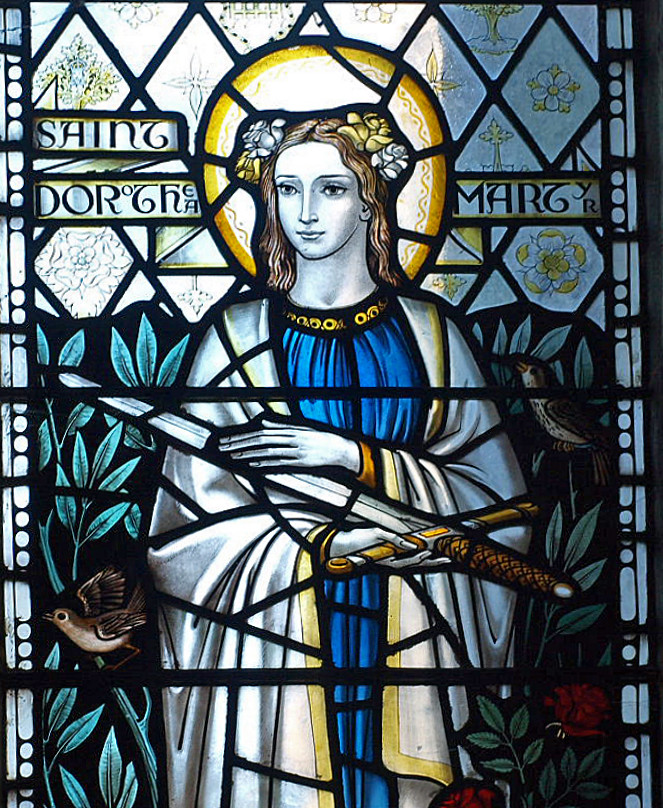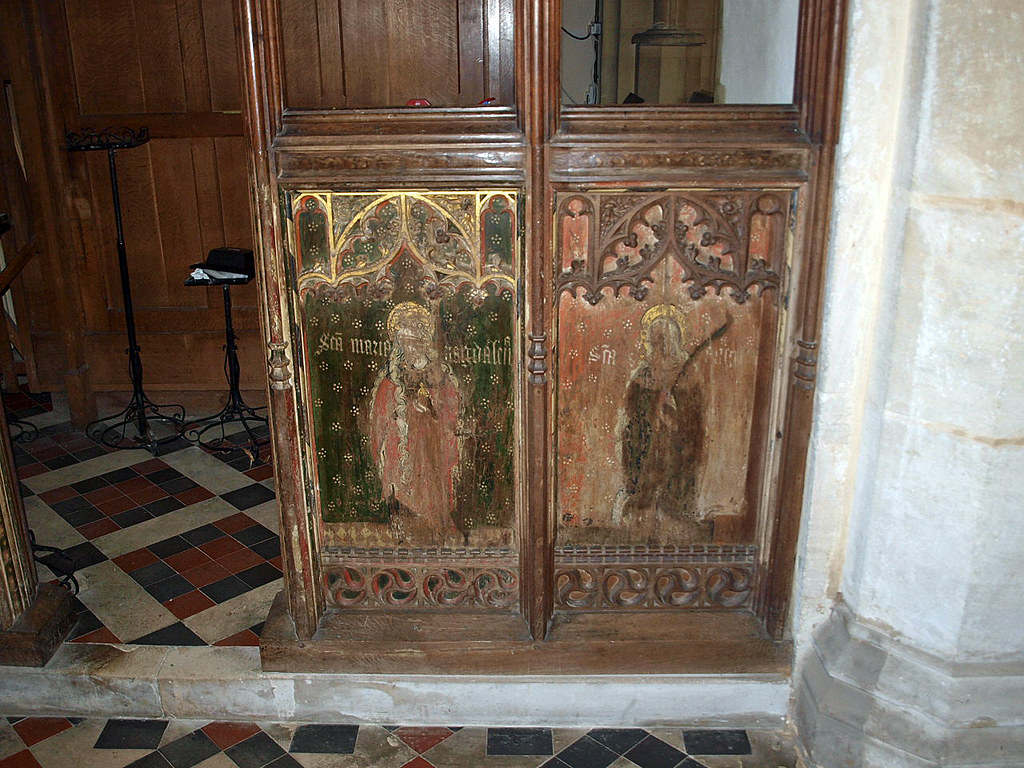Just up the road are the remains of the ruined All Saints.
ST JOHN IN BAPTIST. Early C14 aisle windows and doorways and chancel arch. The rest Perp. W tower with small chequer pattern of knapped flint and stone. Flushwork emblems on a base frieze. Buttresses with flushwork panelling and emblems. Tall battlements with flushwork panelling. Four pinnacles and four angels instead of subsidiary pinnacles. The tower originally had a W porch ). N porch with large inscription commemorating William Pece* and others invoking Christ, St John Baptist, Zachary, Elizabeth, and Johannes again. Niches l. and r. of the entrance. The chancel is mostly new. The interior is earlier than any part of the exterior. Arcades of four bays with circular and octagonal piers. The arches have two hollow chamfers and differ slightly. The date is most probably still in the C13. - FONT. Octagonal, with square panels with a roll moulding as a frame; C13? - SCREENS. In the N aisle. Only the base with four painted Saints is original C15 work. Rood screen, also only the base. - BENCH ENDS. Some are old. - STAINED GLASS. In the chancel, by Powell’s, of the 1880s, quite good. - PLATE. Two Almsdishes, inscribed 1738.
ALL SAINTS, 1/2m. N. Ruined. But the tower stands nearly to the top, its E wall broken off.
* Chaplain c.1500.
GARBOLDISHAM. Its ancient tale is told by burial mounds round about, and by the earthwork known as Devil’s Ditch, running across a heath fascinating for its dark firs and its clusters of silver birch. The village is part of a wooded countryside in the valley of the Little Ouse, and dotted about its ways are houses great and small, with thatched and pantiled roofs. Not far from the 19th-century manor is the lovely Jacobean hall with a fine background of trees and one enormous chestnut.
The 14th and 15th-century flint church stands proudly on a bank at one end of the village, its stately 500-year-old tower crowned with patterned battlements, corner pinnacles, and weatherbeaten angels. The porch, built about 1500, has beautiful modern gates. From the steps of the sanctuary we see the spacious beauty of the rest of the church, where lofty arcades divide the clerestoried nave from its aisles, and a still loftier arch leads to the tower. Many ends of 15th-century seats with fleur-de-lys poppyheads are attached to new benches in the north aisle, and the rest of the seats are copied from them. Three Jacobean relics are a chest, a desk, and an altar table. The oak screen across the chapel, with a modern top of fine tracery and old panels with paintings of two bishops and two women saints, was restored as a thankoffering for 25 years of happiness. The bowl of an old font lies by the new one, and with it are old stones from a church pulled down 200 years ago.
Richly coloured modern glass shows Our Lord with the lame and the blind, and the Madonna and Child between musical angels. One window, with a saint standing in bluebells and columbines, glows in memory of a major who left the peace of the old hall here to die fighting in France in 1916; and an inscription tells of another hero, Arthur Atkins, who went down with HMS Indefatigable at Jutland.



No comments:
Post a Comment